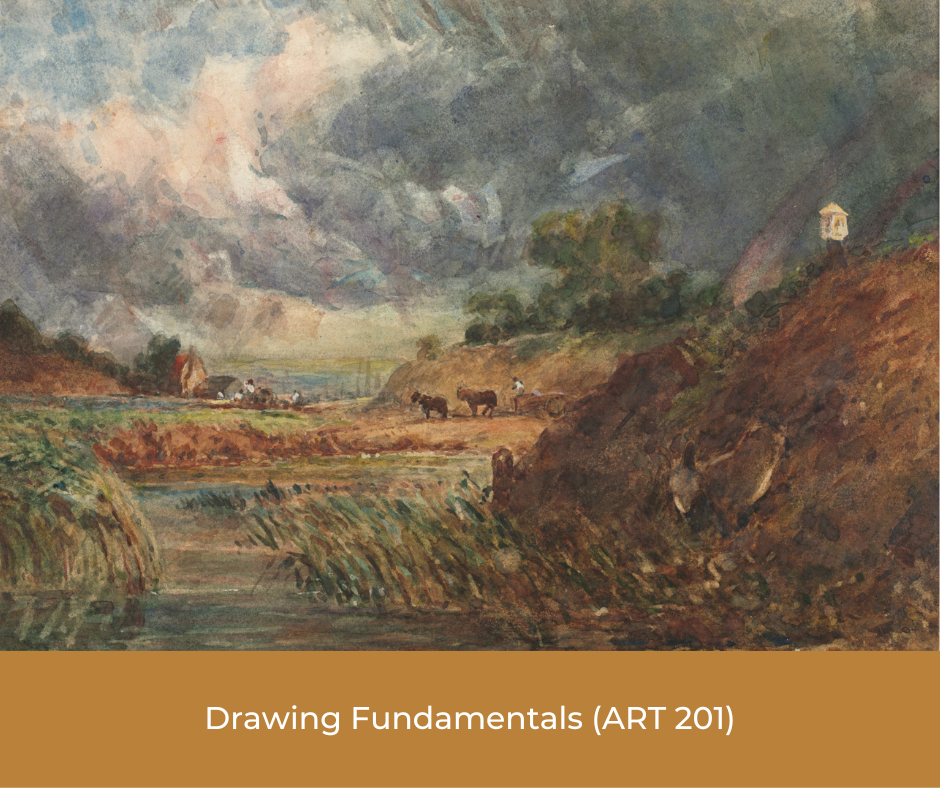Course Description
Drawing Fundamentals (ART 201) is an intermediate-level course that delves deep into the essential techniques and principles of drawing. Through a series of hands-on exercises, students explore the fundamental elements of artistry, including line, form, perspective, and shading. This course serves as a foundation for more advanced artistic pursuits and helps students refine their drawing skills.
Outline of Major Content Areas
- Line and Contour Drawing: Students begin by mastering the art of line and contour drawing, focusing on creating accurate outlines and defining shapes.
- Form and Volume: This section explores the concept of three-dimensionality. Students learn to render forms and objects with a sense of depth and volume.
- Perspective: Perspective drawing is a crucial aspect of visual representation. Students delve into linear perspective, atmospheric perspective, and foreshortening.
- Shading and Value: Students develop proficiency in shading techniques, understanding how light and shadow influence the perception of form and space.
- Still-Life Drawing: Students engage in still-life drawing exercises, which involve setting up and sketching objects arranged in a controlled composition.
- Life Drawing: This segment introduces students to drawing live models, enhancing their ability to capture the human form accurately.
Course Learning Outcomes
Upon successful completion of ART 201, students will:
- Master Line Work: Demonstrate a high level of skill in creating precise and expressive lines, emphasizing contour and detail.
- Understand Form: Develop an understanding of three-dimensional form and the ability to convey volume on a two-dimensional surface.
- Apply Perspective: Apply the principles of perspective to create drawings that convey depth and spatial relationships.
- Employ Shading Techniques: Proficiently use shading techniques to render light and shadow, enhancing the realism and depth of their drawings.
- Capture Still Life: Create compelling still-life drawings that exhibit composition, balance, and attention to detail.
- Draw from Life: Gain experience in life drawing, particularly focusing on the human figure, and accurately represent anatomical features and proportions.
Methods for Assessing Student Learning
Assessment in Drawing Fundamentals (ART 201) is designed to evaluate students’ progress and proficiency in drawing techniques. Assessment methods include:
- Drawing Assignments: Students will complete a series of drawing assignments that progressively challenge their skills in line, form, perspective, and shading.
- Critiques: Regular critiques, both peer-led and instructor-led, provide constructive feedback and encourage students to refine their work.
- Portfolio: Students will maintain a portfolio of their best drawings, showcasing their growth and development over the course.
- Final Drawing Projects: The culmination of the course will involve the creation of final drawing projects that incorporate various techniques learned throughout the semester.
- Written Reflections: Short written reflections on their own drawings and the works of master artists will help students articulate their artistic choices and concepts.
Drawing Fundamentals (ART 201) offers students an immersive journey into the world of drawing, equipping them with the skills and knowledge to create expressive and dynamic visual artworks.
